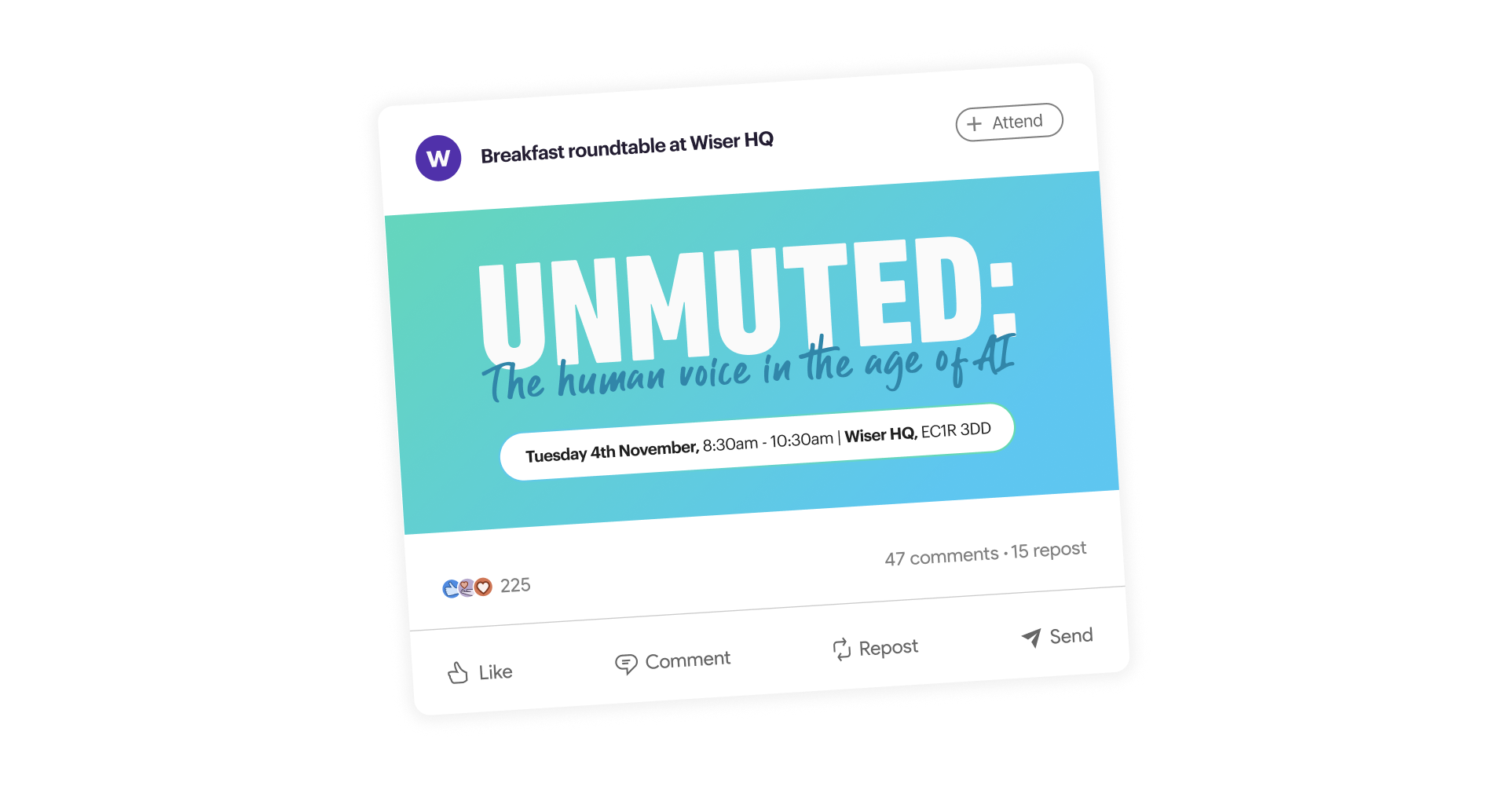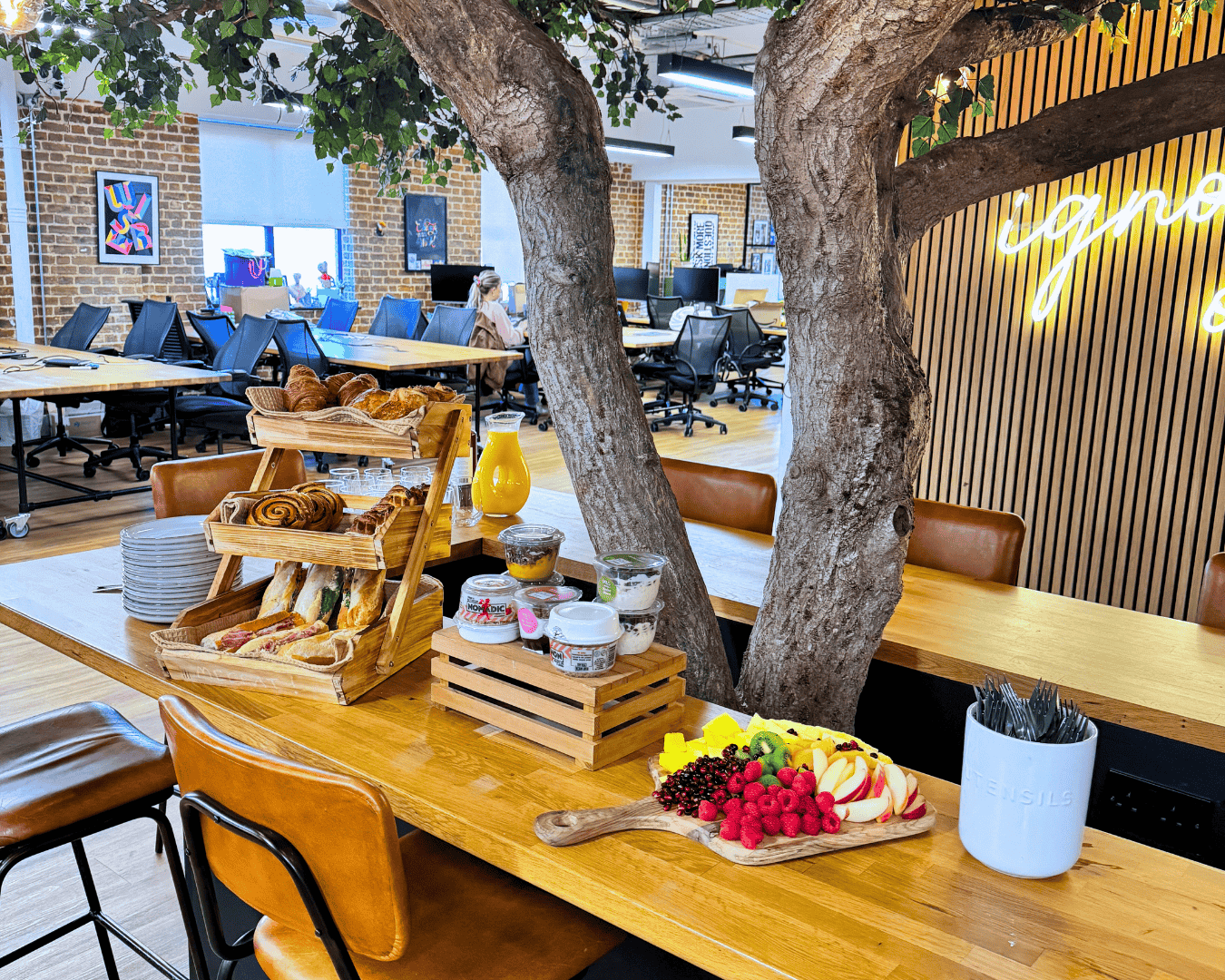What's covered in this blog:
Earlier this month, we hosted another one of our breakfast roundtable sessions. This time, in partnership with Seenit, with Founder Emily Forbes hosting alongside Wiser’s Head of Social & Advocacy, Stephanie Smith.
The topic was employee advocacy programmes — what actually makes them work in 2025, across different industries, risk appetites, and team setups.
The thing that kept coming up? Sure, the tech and tools have come a long way. But the advocacy programmes that actually stick still come down to the same things: real human voices, creating spaces where people feel safe to share, and building habits that don't feel like a chore.
Here are three of the most powerful lessons from the day:

1. Compliance doesn't need to kill creativity; it just needs better design
For leaders in regulated industries like pharma and finance, the pressure is real. One guest described a setup so tight that even liking a post with off-brand language could trigger a company-wide compliance review.
But the best teams aren't walking on eggshells. They're building walkways.
One standout solution came from a leader who ditched the traditional "40-page brand manual" and replaced it with a practical toolkit: red-amber-green examples, pre-approved content themes, ready-made disclaimers, and a clearly signposted "check-before-you-post" route.
"We turned compliance into enablement. It's not about scaring people, it's about giving them the guardrails to create with confidence."
When people know where the lines are, they're far more likely to draw something of value.
2. Advocacy isn’t a broadcast. It’s a behaviour.
It's easy to assume that more posts = more advocacy. But one theme we heard again and again was that volume doesn't equal value.
One guest shared a now-familiar frustration: "Our Marketing Team would supply assets and copy ready to go, and 30 of the exact same posts would drop company-wide at 9am on a random Thursday. No personality at all.”
It's visible for sure, but it's not advocacy. And audiences see through it instantly.
The shift now? From copy-paste campaigns to communities that grow organically. Programmes that start small, with real volunteers and visible champions, then snowball as others see it working.
"We celebrate people who use their own voice. That's what draws others in, not mandates."
One example that got everyone nodding was a lo-fi image of a project lead with a CEO. No glossy visuals. No perfect copy. A real moment posted spontaneously. The comments called out the "unsung hero," and the post outperformed everything else that week.
3. AI can help you go faster, but it shouldn't speak for you
Everyone in the room was experimenting with AI. And most weren't using it to generate stories. They were using it to remove friction: translation, formatting, subtitles, scheduling, video edits.
That's the sweet spot. As one attendee put it:
"We treat AI as a co-producer. It speeds us up, but it doesn't speak for us."
There was a note of caution, too. With watermarking and detection tech on the rise, companies will soon be forced to disclose what's been AI-generated. Which means the line between efficiency and fakery is going to matter more than ever.
Authenticity isn't just a buzzword. It's a brand asset, and people can smell synthetic storytelling a mile off.
So, what now?
One thing was clear: telling people to "just post more" doesn't work. The best advocacy programmes focus on why, how, and who, not just what.
They start with small cohorts. They provide real enablement, not just a Canva link. They respect compliance without paralysing creativity. They use AI as a time-saver, not a voice replacement. And they measure behaviour, not just reach.
The future of advocacy isn't about broadcasting louder. It's about building a culture people want to speak up for.
That's what we're here for.
At Wiser, we help brands build advocacy programmes that align the inside with the outside, turning proud employees into powerful storytellers. We find your natural champions, build their confidence, and scale what works.
If you're thinking about doing advocacy differently, with structure, purpose, and people at the centre, we'd love to talk.




